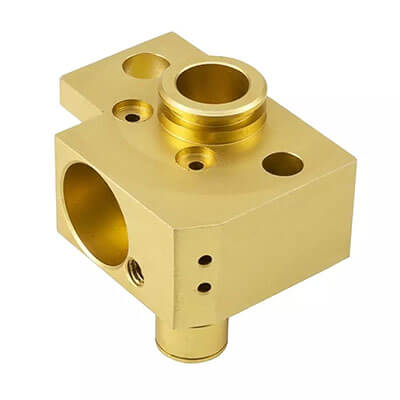A modern machine shop must work with a wide variety of materials to meet the needs of product designers. Some of these materials, such as brass, are generally easy to machine. Meanwhile, parts made from other materials like titanium require more advanced tools and experience to produce good results.
But what makes one material easier to process than another? Machinability! This article will take an in-depth look at what machinability is, how to measure it, and tips for improving machining efficiency.

What is Machinability?
Machinability is a material property that describes the relative ease with which a material can be machined. Although it is most commonly used on metals, it is applicable to any machinable material.
Materials with above-average machinability exhibit some important advantages during processing:
- Reduced tool wear resulting in longer tool life and lower operating costs.
- Speed up machining by accommodating higher cutting speeds.
- Cuts more smoothly with less buildup for a higher quality surface finish.
- Reduce power consumption while maintaining proper cutting forces.
On the other hand, materials with poor machinability exhibit the opposite qualities. They are more demanding on equipment and tooling, require more machining time, and require extra effort to achieve a good surface finish. All of this means that less machinable materials are more expensive to machine than easy-to-machine materials.
Many different physical properties can affect processability, including a particular material’s hardness, tensile strength, thermal characteristics, and more. While knowing these other values can help a machinist or materials engineer predict the approximate machinability of a material, the only way to be sure is through machinability testing.
Understanding Machinability Ratings
The most widely used method of quantifying the machinability of a material is by its machinability rating. This rating, sometimes called the Machinability Index, is a relative value determined through testing. Established by the American Iron and Steel Institute (AISI) to CNC turn a material and compare tool life, speed, and surface finish to a reference material (AISI B1112 steel with a hardness of 160 HB).
Machinability ratings work similarly to the Celsius and Fahrenheit temperature scales in that the somewhat arbitrarily chosen values reflect the reference point. In these temperature scales, the baseline is set around 0°C and 0°F. In the AISI test method, the free-machining steel AISI B1112 is set as a reference point with a machinability class of 100%. From there, the material scored more than 100% faster and easier to machine than B1112 steel. Materials that take longer to process and are more difficult to machine are rated less than 100%.
For example, very difficult to machine ASTM grade 5 titanium (Ti-6Al-4V) has a machinability of only 17%, while SAE 6061 aluminum has a machinability of 270%. However, these ratings are ultimately only a guide for determining the relative difficulty of machining a particular material. In fact, designers and machinists can do a lot to improve machining efficiency.
Can You Improve Machinability?
How the “machinability” of metals is affected by changes in the workpiece and changes in the machining process. If machinability is an obstacle to design, one of the first questions should be “Can we use a different material?” Even if that just means choosing a more machinable alloy rather than switching to a completely different metal.
But if changing the metal alloy is not an option, there are options. Work hardening and certain heat treatments to the metal early in the production process can make it more difficult to machine. Manufacturing methods and treatments that cause hardening should be performed as far as possible after machining. If this is not possible, you may consider annealing the workpiece before machining to remove internal stresses and soften the metal.
In addition to the workpiece material, there are many factors that can affect machining efficiency, such as the machining method used, coolant application, tool, cutting path, etc. By utilizing different types of equipment in a machine shop, such as wire EDM, you can reduce manufacturing time. Using tools with different designs or made of different materials can accommodate higher speeds while extending tool life.
It is best to analyze the specific situation to improve the processing efficiency without changing the workpiece. For example, while thermoplastics are soft, their properties make them difficult to process without melting and bonding to tools. Using materials with higher machinability is an option, but controlling temperature and adjusting processing parameters with special coolants has proven to be equally effective.
Efficient Processing for Hard-to-Machine Parts
Machinability is a key indicator of the time and cost to manufacture a part from any material. Parts with high machinability ratings are easier to produce, while less machinable materials require more time and expertise to process effectively. In either case, top machine shops can often increase output while maintaining quality by adapting their methods to reflect specific materials and part designs.
Let Seicenc boost your business today!
Seicenc has been in CNC machining industry for 12 years, let us provide you with high quality custom precision machined parts.
By the end of 2022, we have worked with more than 1,000 clients in more than 30 countries, and supplied them over 1 million unique parts.
Do not hesitate. Just contact us right now! We will give you an instant quotaion within one days!
